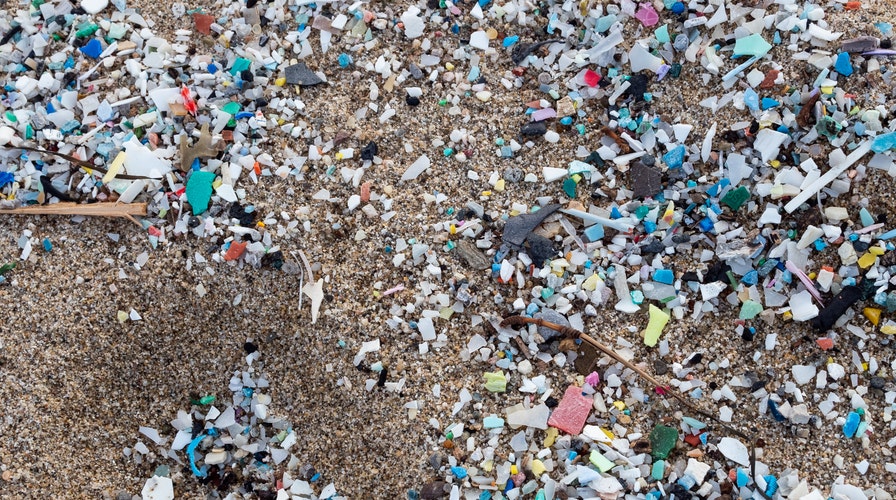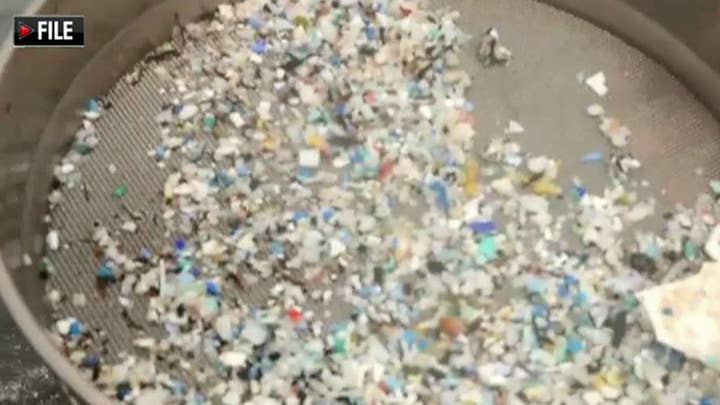Fox News Flash top headlines for May 5
Fox News Flash top headlines are here. Check out what's clicking on Foxnews.com.
A new international research project revealed the highest concentration of microplastic ever seen on the seafloor -- up to 1.9 million pieces in a thin layer covering one square meter.
More than 10 million tons of plastic waste enter the oceans each year, but that type of floating plastic -- think bags, straws or cellphone cases -- accounts for less than 1 percent of total plastic entering the world's oceans.
According to new research published this week in the journal Science, deep-sea ocean currents are acting as conveyor belts to move these extremely tiny plastic fragments and fibers across the seafloor. Microplastics, which are typically less than 5 milimeters in length, account for the other 99 percent.
"Our study has shown how detailed studies of seafloor currents can help us to connect microplastic transport pathways in the deep-sea and find the 'missing' microplastics. The results highlight the need for policy interventions to limit the future flow of plastics into natural environments and minimize impacts on ocean ecosystems," research co-lead Mike Clare, of the National Oceanography Centre, said in a statement.
CORONAVIRUS COULD CAUSE LARGEST DROP IN CARBON EMISSIONS EVER: REPORT
Those ocean currents can then concentrate the microplastics into "hotspots" or huge areas of microplastic accumulation.
"Almost everybody has heard of the infamous ocean 'garbage patches' of floating plastic, but we were shocked at the high concentrations of microplastics we found in the deep-seafloor," said the study's lead author, Ian Kane of The University of Manchester.


